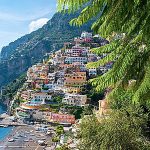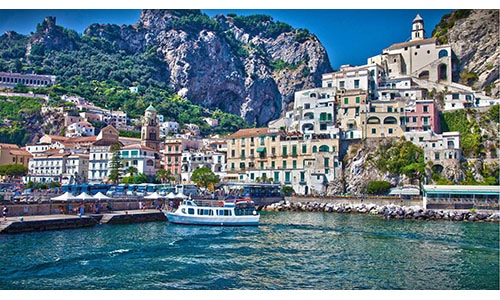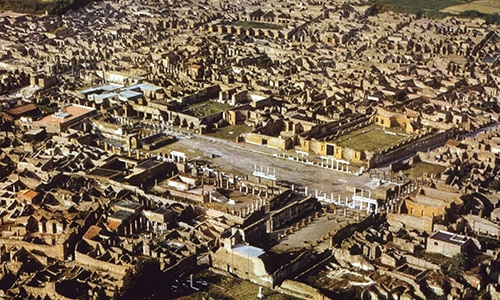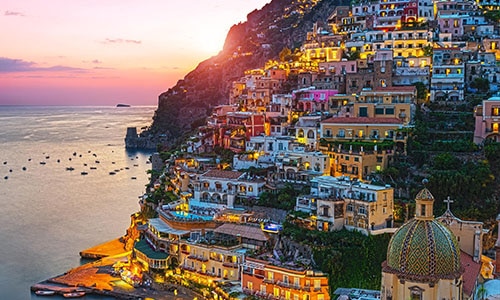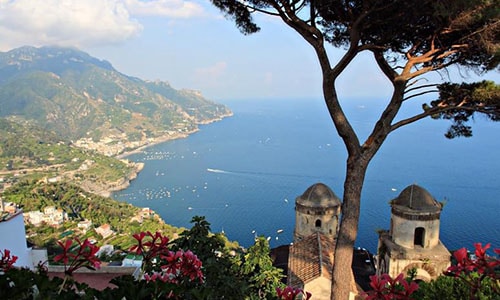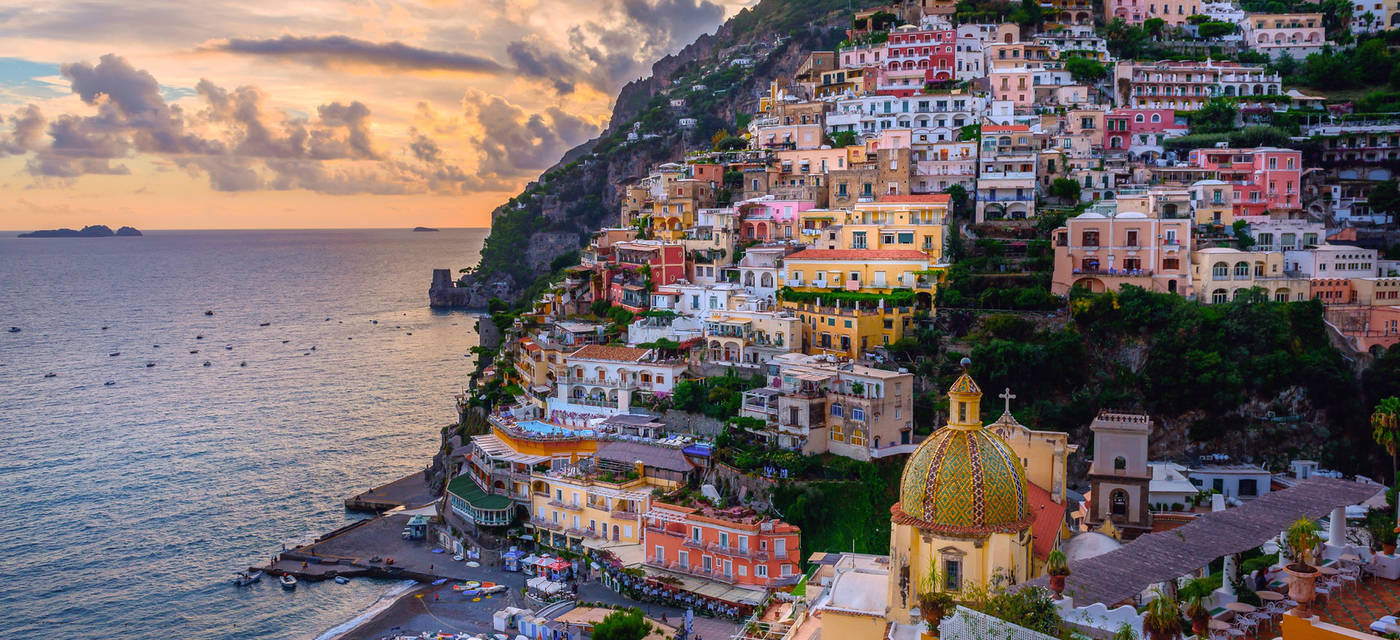
Positano
“Positano bites deep. It is a dream place that isn’t quite real when you are there and becomes beckoningly real after you have gone. Its houses climb a hill so steep it would be a cliff except that stairs are cut in it. I believe that whereas most house foundations are vertical, in Positano they are horizontal. The small curving bay of unbelievably blue and green water laps gently on a beach of small pebbles. There is only one narrow street and it does not come down to the water. Everything else is stairs, some of them as steep as ladders. You do not walk to visit a friend, you either climb or slide.
Nearly always when you find a place as beautiful as Positano, your impulse is to conceal it. You think, “If I tell, it will be crowded with tourists and they will ruin it, turn it into a honky-tonk and then the local people will get touristy and there’s your lovely place gone to hell”. There isn’t the slightest chance of this in Positano”.
(John Steinbeck, "Harper's Bazaar", Maggio 1953)
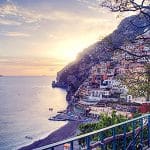
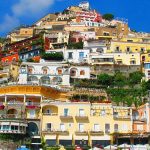
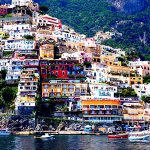
American writer John Steinbeck had no idea of what in the following years would become Positano. Known as ‘the pearl’ of Amalfi Coast, this ancient village of fishermen has become one of the most popular tourist places in the world. In every corner of Positano, we can have the demonstration of its history and the various designations received. Years ago in the Paleolithic period, the cave located in the place “The Gate” underlined the first demonstrations of human presence in this small town. It was the destination of Greeks and Phoenicians who stopped here on their journey to West. Then arrived Romans, who built a rich patrician villa near to Big Beach, buried by the eruption of Vesuvius in A.D 79 and exhumed it starting from the end of 2003. It affected by a succession of florid periods during the Republic of Amalfi, thanks to the maritime commerce to East, and darkest periods, such as Angevin and Aragonese domination, that led Positano to be attacked by Saracen pirates. And with the purpose of defending the town by them that people of Positano began to erect some of famous Saracen towers that today characterize all the coast. Already after the First World War, it was chosen by many Russians and Germans artists and writers for its atmosphere of calm and serenity. Later, and especially close 1933 and with the hold of power in Germany of Hitler and the subsequent racial laws, Positano was a proper hiding place for those who were considered enemies of Nazional Socialist regime. Writers and artists such as Armin T. Wegner, Stefan Andres, Walter Meckauer, Lola Landau, Elisabeth Castonier, Kurt Craemer, Irene Kowaliska, Michael Semenoff, and many others, spent part of their exile in this place, away from History. With their works they told the everyday life of Positano, helping to make it known to the international public. During the years it’s continued to increase its renown, it’s become well known in the sector of fashion with its Moda Positano brand, its stylish boutiques, and workshops, it was and today it’s still set for Italian and foreign films and commercials spot. It’s a real jewel set among the rocks, a crib made of small houses perched, of stairs which will seem to us endless, of alleys and narrow streets, between colors, scents, and flavors you will feel like being in a postcard.
DON'T MISS
S.Maria Assunta Church
It founded in the second half of X century, its history is linked to the arrive in Positano of Madonna with Child’s byzantine icon, come here in XII century most likely on a board of ships of benedictine monks. However popular tradition think it’s arrived on a sailer coming from the eastern regions, and met up in a storm, during which Madonna itself would have said “Lay, lay!”, interpreted as a manifestation of its desire to remain in this place. Today icon is sited on the high altar.
Of notable importance is undoubtedly also the reliquary bust of the martyr St. Vitus, patron of Positano, of the Neapolitan school of the century. XVI and One of the Most Important Works of the Coast; The Altar of the Circumcision with a painting by Fabrizio Santafede of 1599; The Bell Tower, on whose door is walled a medieval bas-relief on which depicts a sea monster and above A plaque in memory of the inventor of the compass Flavio Gioia, whose origins have long been disputed between Positano and Amalfi.
Museum Complex with the Medieval Crypt and the Roman Villa
The first, located under the apse of the Church of Santa Maria Assunta, would be earlier than the realization of the SAME church and carried out liturgical FUNCTIONS.
The second is considered the greatest archaeological discovery occurred on the Coast in the recent decades. They have been unearthed splendid frescoes and works of great value as a golden columns, Hippocampus, Griffins, Cupids on a horse and a winged Pegasus. The original owner was most likely the freedman Posides Claudi Caesari, from which derives also the name of Positano.
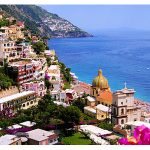
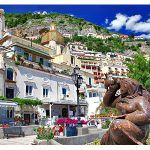
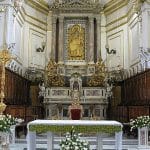
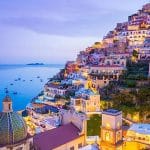
Street Positanesi of America
A path that connects the main beach with the one of Fornillo, a romantic stroll, ideal at sunset, which owes its name to all those Positanesi that in the sec. XIX emigrated to the United States. Half way you can enjoy one of the many Saracen towers, Trasita Tower, and in the background Torre Clavel, located beyond the end of the path.

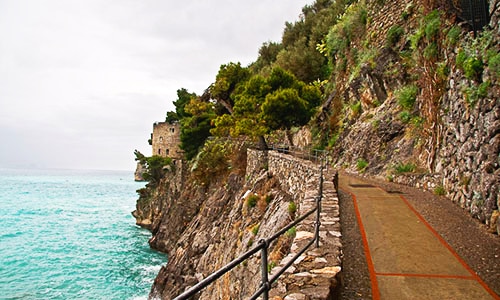
Vallone Porto
Unesco Heritage thanks to its natural elements, is home to a particular ecosystem, due to the presence of rare species of flora and fauna, all surrounded by waterfalls.
Montepertuso and Nocelle
These two villages, hamlets of Positano, are located in the high area of the country, accessible through an endless series of stairs or, for lazy people, through a drive way. They are the ideal destinations for those who want to get away for a day by the sea and take walks.
Montepertuso takes its name from a large hole in the mountain, sign, according to legend, of the battle between Good and Evil, between the Virgin Mary and the Devil, from which the first comes out triumphant. If you are in Positano the 2nd of July, don’t miss the party of the Madonna delle Grazie, where the legend is re-enacted to the sound and the color of fireworks.
Nocelle is popular with those who wish to tread the Path of Gods starting right from this side or from those who come having already walked the path from Agerola. From the village square you will experience an indescribable view, with a view not only of Positano, but also on Capri and its Faraglioni.

